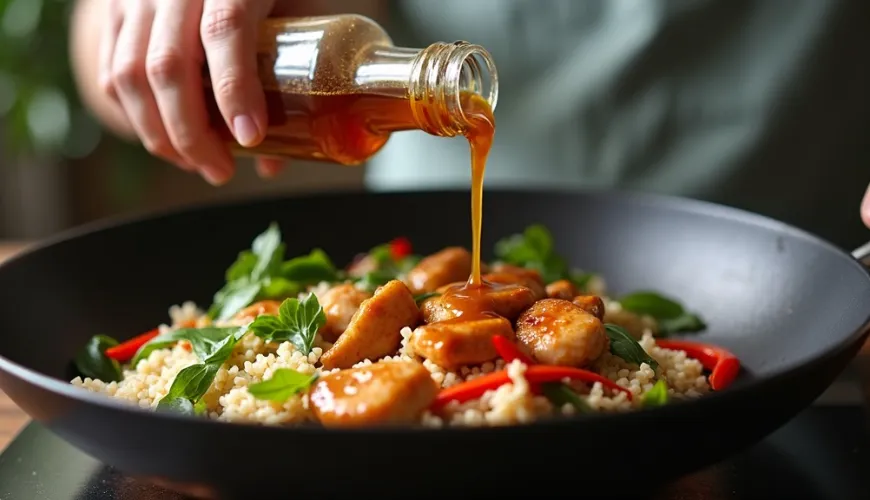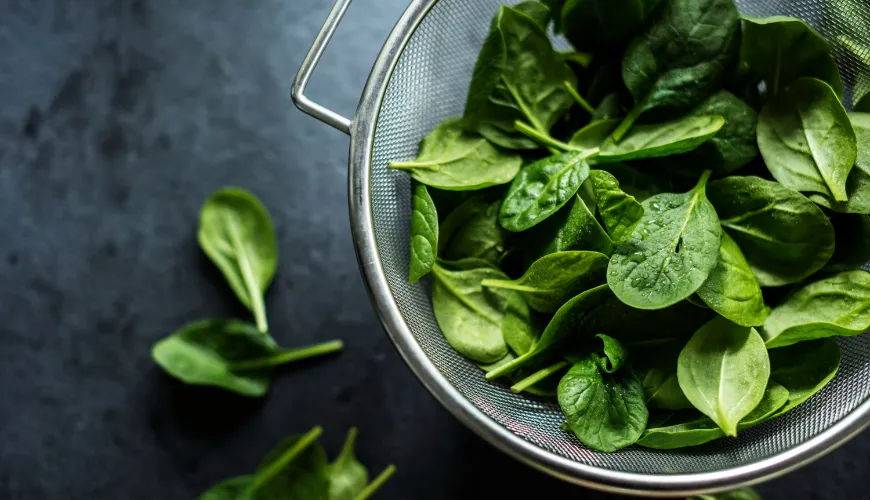
Oyster sauce for tastier and easier cooking

Umami in a Bottle - Why Oyster Sauce is the Secret Weapon of Asian Cuisine
When you hear "oyster sauce," many people automatically think of the exotic cuisine of Southeast Asia. This dark brown, thick liquid with a specific, deeply salty, and slightly sweet taste is one of the basic ingredients in Chinese, Thai, or Vietnamese cooking. Although the name might deter those who aren't fond of oysters, its flavor is actually quite different from fresh seafood. It might surprise you that oyster sauce also has a place in European cuisine – whether it's for seasoning vegetable mixes, marinating meat, or preparing quick stir-fry dinners.
What is Oyster Sauce and How is it Made?
Oyster sauce originated in China in the late 19th century almost by accident. According to legend, it was discovered by chef Lee Kum Sheung, who forgot to cook an oyster broth and left it on the fire for too long. The broth reduced to a thick, dark paste with a surprisingly rich flavor – and thus the first oyster sauce was created, which is now produced in various versions worldwide.
Traditional production involves cooking oysters in water and then thickening and seasoning the resulting broth. In modern production, other ingredients like sugar, salt, cornstarch, and soy sauce are often used. It is this combination of ingredients that gives oyster sauce its typical umami profile – the fifth taste perceived by human taste buds alongside sweet, salty, sour, and bitter.
What is Oyster Sauce Used For?
Oyster sauce is exceptionally versatile in the kitchen. Its main role is in flavoring – due to its thickness and concentrated taste, a small amount is enough to give a dish a completely new dimension. It is suitable for both hot and cold dishes, although it is most commonly used in cooked meals.
A typical example is stir-fried vegetables in Asian style – for instance, broccoli, cauliflower, or pak choi in a pan with garlic, a bit of sesame oil, and a spoonful of oyster sauce. The result is a juicy, aromatic dish with a slightly caramelized flavor reminiscent of meat, even though it is entirely plant-based.
This sauce is great not only for classic seasoning but also as a superb complement to meat, fish (such as beef stir-fry or marinated chicken pieces), noodles, rice, or Asian soups like pho or Chinese broth. Moreover, it can also enliven various sauces and dips, for instance, at a barbecue with friends.
In Czech households, oyster sauce is gaining more and more fans precisely because of its simplicity and ability to add depth of flavor to entirely ordinary ingredients. A single drop in the drippings after roasting meat can turn a Sunday lunch into a culinary experience.
Oyster Sauce in Practice - A Simple Recipe Anyone Can Master
One of the easiest ways to try oyster sauce is with a quick home stir-fry dinner. It takes no more than 20 minutes, and the result rivals many Asian bistros.
Recipe: Chicken Stir-Fry with Oyster Sauce
Ingredients (for 2 servings):
- 300 g chicken breast, sliced into thin strips
- 1 tablespoon oyster sauce
- 1 tablespoon soy sauce
- 1 teaspoon sugar (preferably cane sugar)
- 1 clove garlic, chopped
- 1 small onion, sliced into half-moons
- 1 red pepper, sliced
- 1 handful fresh spinach or baby leaf
- 1 tablespoon vegetable oil (e.g., canola or peanut oil)
- cooked jasmine or basmati rice for serving
Instructions:
- In a bowl, mix the chicken with oyster sauce, soy sauce, and sugar. Ideally, let it marinate for 10-15 minutes.
- In a hot wok or deep pan, heat the oil, add the garlic and onion, and briefly sauté.
- Add the chicken with the marinade and cook for about 5-6 minutes until the meat is cooked through.
- Stir in the pepper and spinach, sauté for another 2-3 minutes. If the mixture is too thick, you can add a tablespoon of water.
- Serve immediately with rice.
This recipe clearly shows how easily oyster sauce can enhance even ordinary ingredients. The balanced combination of salty, sweet, and umami flavors gives the dish depth without needing complex techniques or exotic ingredients.
Plant-Based Alternatives? Vegans Can Also Enjoy
And what about those who avoid animal products? Today, it's not a problem to find vegan oyster sauce, which is often made from shiitake mushrooms or other types of mushrooms supplemented with natural aromas and spices. It closely resembles the original in taste and is an excellent choice not only for vegans but also for those allergic to seafood.
For example, in Hong Kong cuisine, a so-called "vegetarian mushroom sauce" is commonly used, which has almost the same properties and uses as its oyster counterpart. In Czech health food stores or eco-friendly e-shops like Ferwer, you can now regularly find both classic and plant-based versions.
How to Choose Quality Oyster Sauce
When purchasing oyster sauce, it's worth paying attention to the ingredients. Especially cheaper versions may contain artificial flavorings, flavor enhancers, or too much sugar. Ideally, the ingredients list should mention oyster extract among the first items. A good indicator of quality is also the sauce's thickness – quality products are usually thicker, with a glossy and intensely brown color.
Brands like Lee Kum Kee, Healthy Boy, or Panda are among the most well-known and often receive positive reviews from both professional chefs and home enthusiasts.
When Oyster Sauce Surprises Even in Czech Cuisine
It may sound unlikely, but oyster sauce can also be used in preparing traditional Czech dishes. For example, when roasting pork or preparing game goulash, a few drops can enhance the meaty flavor and add a gentle saltiness without the need to add bouillon cubes or MSG. Similar to Worcestershire or soy sauce, oyster sauce offers an interesting way to season dishes without complex seasoning.
An example is Mrs. Jarmila from Olomouc, who tried oyster sauce instead of the classic broth when braising beef with onions. The result surprised not only her but also her family: “The meat was juicy, had a peculiar, almost smoky taste. And yet I didn't use a drop of wine or soy sauce. It definitely won't be the last time," she describes.
Oyster sauce is thus not just the prerogative of exotic recipes – it can enrich any kitchen that seeks new, yet simple ways to cook deliciously with minimal seasonings.
Whether you opt for the original with oysters or the plant-based version, one fact is undeniable: the success of oyster sauce lies in its ability to combine flavors, enhance ingredients, and add depth to dishes, which is otherwise achieved only through complex cooking or long braising.
In the kitchen, it's a small miracle in a bottle – and it's definitely worth trying.

